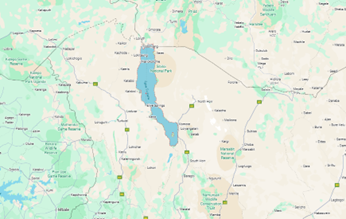SYLLABUS
GS-3: Conservation, environmental pollution and degradation, environmental impact assessment
Context:
According to a new study led by researchers from Syracuse University and the University of Auckland stated that falling water levels in one of Africa’s largest lakes, driven by changes in climate, led to a rise in earthquakes.
Key Findings of the Study
- Over the past 6,000 years, Lake Turkana’s water level decreased by approximately 100-150 meters due to climate fluctuations.
- This long-term lake level decline is linked to an increase in fault slip rates and seismic activity in the region.
- Researchers examined fault throw rates on 27 faults beneath the lake and found:
- 74% showed higher slip rates during drier periods with lower water levels.
- Only 11% showed decreases in fault slip rates.
- As climate change reshapes hydrological systems, the study indicates it may also influence tectonic and volcanic activity, albeit over long geological timescales.
Mechanism
- When lake levels drop, the crust effectively lightens, reducing pressure, meaning that faults move more easily and the production of magma under regional volcanoes increases.
- This profound effect on the Earth’s crust enables faults to slip more freely, generating more seismic activity and likelihood of earthquakes.
About Lake Turkana

- It is the world’s biggest permanent desert lake, stretching about 250 km long and as wide as 30 km, located in northern Kenya.
- It is the world’s fourth-largest Salt Lake by volume.
- It is also known as the cradle of humanity as it has yielded fossils up to 4.2 million years old from multiple hominin species that may have lived side by side.
- It is located between Kenya and Ethiopia in the Great Rift valley, a place where the continental plate is slowly splitting and spreading apart.
- The Omo River is the primary river feeding Lake Turkana, providing about 90% of the lake’s yearly water inflow. Additionally, the Turkwel and Kerio rivers also contribute water to the lake, though their combined input is much smaller compared to the Omo River.
Sources:
Down to Earth
New Scientist

